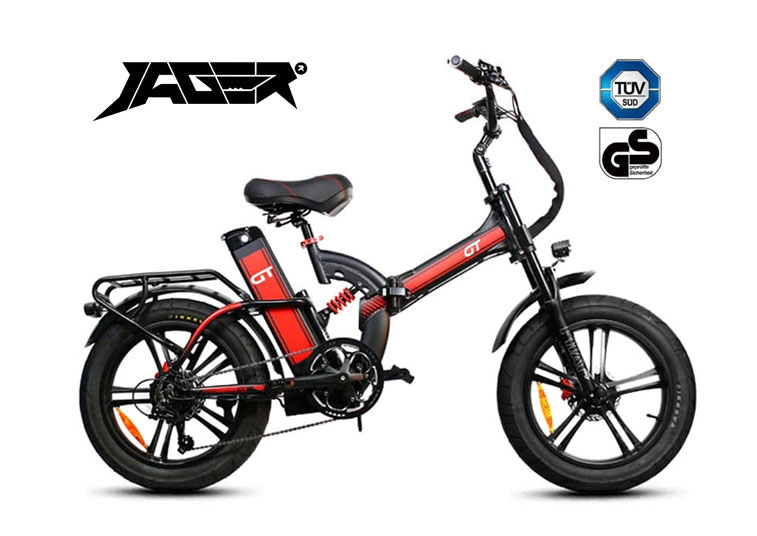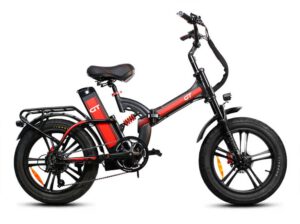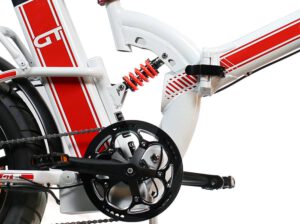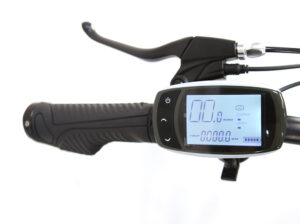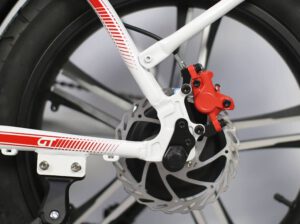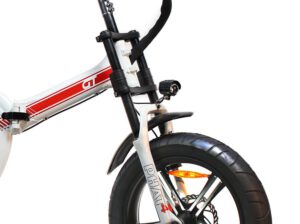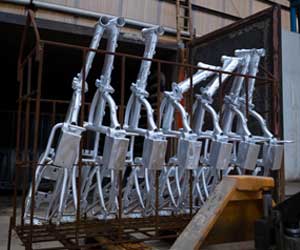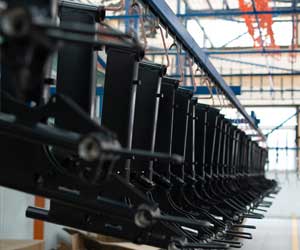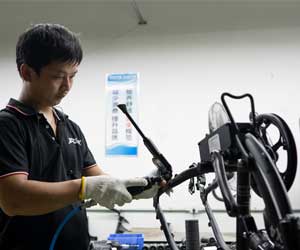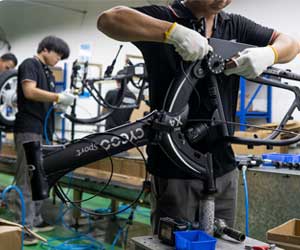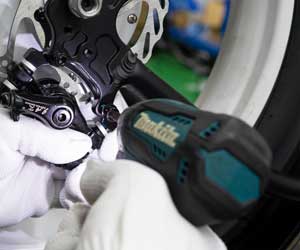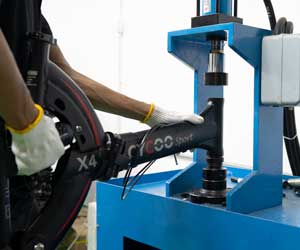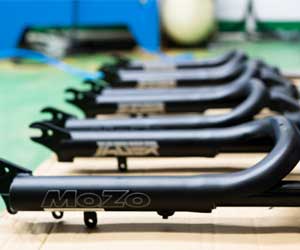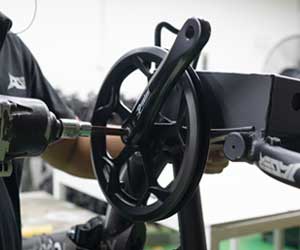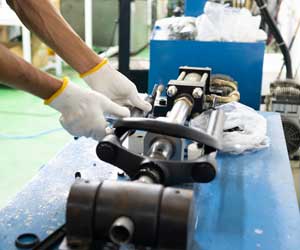JAGER bike
Electric folding bikes are everywhere in city streets, on trains and buses, in office buildings and campgrounds. An origami bike that fits under your desk or into a tight space is hard to beat. Additionally, they can make your commute or grocery run faster and easier. Many bike brands are creating the ultimate mini-commuter machines and choosing compact bikes for multimodal travel, apartment storage, or RV packing.
JAGER XGT Folding electric bike specifications
Frame: 20″ AL Frame with patent
Shock Fork: Fat-99-24″, MOZO double crown suspension fork
Fender: ABS Fender black
Tire: Innova Tire 20*4 1/4
Alloy wheel motor: alloy wheel rim 48V/750W
Stem: Adjust alloy stem
Grip: Leather Grip
Front & rear brake: XOD Hydraulic brake
Crank: Jiankun double wall 52T
Shifter/Derailleur/Freewheel: SHIMANO 6 GEAR
Pedal: Foldable TUV approve
Saddle: Sofa Saddle Carrier: Alloy Carrier
Seat post: KS approved by TUV
Rear light: Jäger Bike RL810 + 48VDC
Front light: Jäger Bike D-022 48V
Charger: 67.2V 2A Controller: 48V/30A
Battery: 60V 18AH, G9 patent lock
Display: Jager bike X5 display
Carton: 5 layer
What should you know about motors?
An e-bike with a hub motor is the most common folding e-bike. In comparison to mid-drive motor setups (usually used on traditional, non-folding e-bikes), hub motors have three main advantages. The hub motor has the primary advantage of being small and taking up no extra space on the bike. Bike designers can use hub motors in the front or rear wheel. Front hub motors may affect the handling characteristics of a motorcycle. Last but not least, hub motors are less expensive than mid-drive systems.
How much wattage is enough?
Most bikes are 250- and 350-watt motors, but most motors can also reach higher peak wattage ratings for a short time. A motor’s wattage alone does not tell its story. An engine’s torque also means how much “oomph” it has. Motors with higher torque feel more powerful and accelerate faster than motors with lower torque. Nevertheless, the more robust an engine is, the more energy it consumes.
Most folding e-bikes cut off pedaling assistance at 20mph, regardless of torque or watts. This limit is generally in place to ensure safety on bike paths and restrict street-legal activity without special permits or registrations. In class 3 e-bikes, assistance cut off at about 28 mph.
On a folding e-bike, you’ll likely be happy with a 20mph cutoff. For 28mph, a bike would need a larger battery and a more powerful motor, adding weight and making it harder to ride.
You should pay attention to the battery’s watt-hours (Wh). Generally, the higher the number, the longer you can go between charges and the more power the battery holds.
How about the ebike’s wheel size?
When shopping for an electric folding bike, wheel size is essential because it determines how small the bike can fold down or what terrain it can handle.
Folding e-bikes usually have 20-inch wheels, so they can fit into a car trunk or be transported on a train. Choose a bike with 16-inch wheels if you want a smaller folded package.
Full-size wheels use on some folding e-bikes. With larger wheels, you can more easily roll over bumps and holes in the road, resulting in a smoother ride. The larger wheels of a folding bike will not make it as compact as a traditional one, but it does have more of a feel than a standard bike.
Is 750W enough for an e-bike?
The acceleration of the line will be much more thrilling for light riders like me if the power is 750 W. As the power increases, hill climbing performance will also improve.
For heavier riders, 750 W is when flat land performance becomes more enjoyable, and hills become consistently possible. At 1,000 W of power, most heavy riders will be more pleased with the performance. Speeds of 45 km/h (28 mph) are increasingly familiar with 750 W e-bikes.
For daily riding, 750W is enough.
Is it possible to ride an eBike up steep hills?
EBikes are to handle those sharp rises like any other bike on the road.
An eBike on a steep hill
With their electric assistance, eBikes offer cyclists a smooth ride, and since they often equip with advanced technology, they allow cyclists to track their progress and navigate steeper gradients.
Steep hill cycling tips
Understand your assistance level options and proceed accordingly. Be prepared to increase electric assistance as you approach steeper hills.
Most eBikes still have gears that you can change. Downshift well before the steep hill, or you risk coming to a complete stop because you are in too high a gear. Once your speed starts to dip, gear down to a comfortable level.
If you run out of gears and struggle to adjust to the steep hill, standing up can provide additional force to the pedals. Before walking, consider this your last option.
It is possible to avoid injuries and fatigue if you know when to hop off and walk. There is no shame in this. Walking up the hill is slower than cycling, so once you’re comfortable, hop back on and try again. It is crucial to ensure the safety of eBikes.
Finally, it helps to plan your route and identify any steep areas that may be a problem for you. You can adjust your course accordingly or prepare in advance for these more challenging sections.

